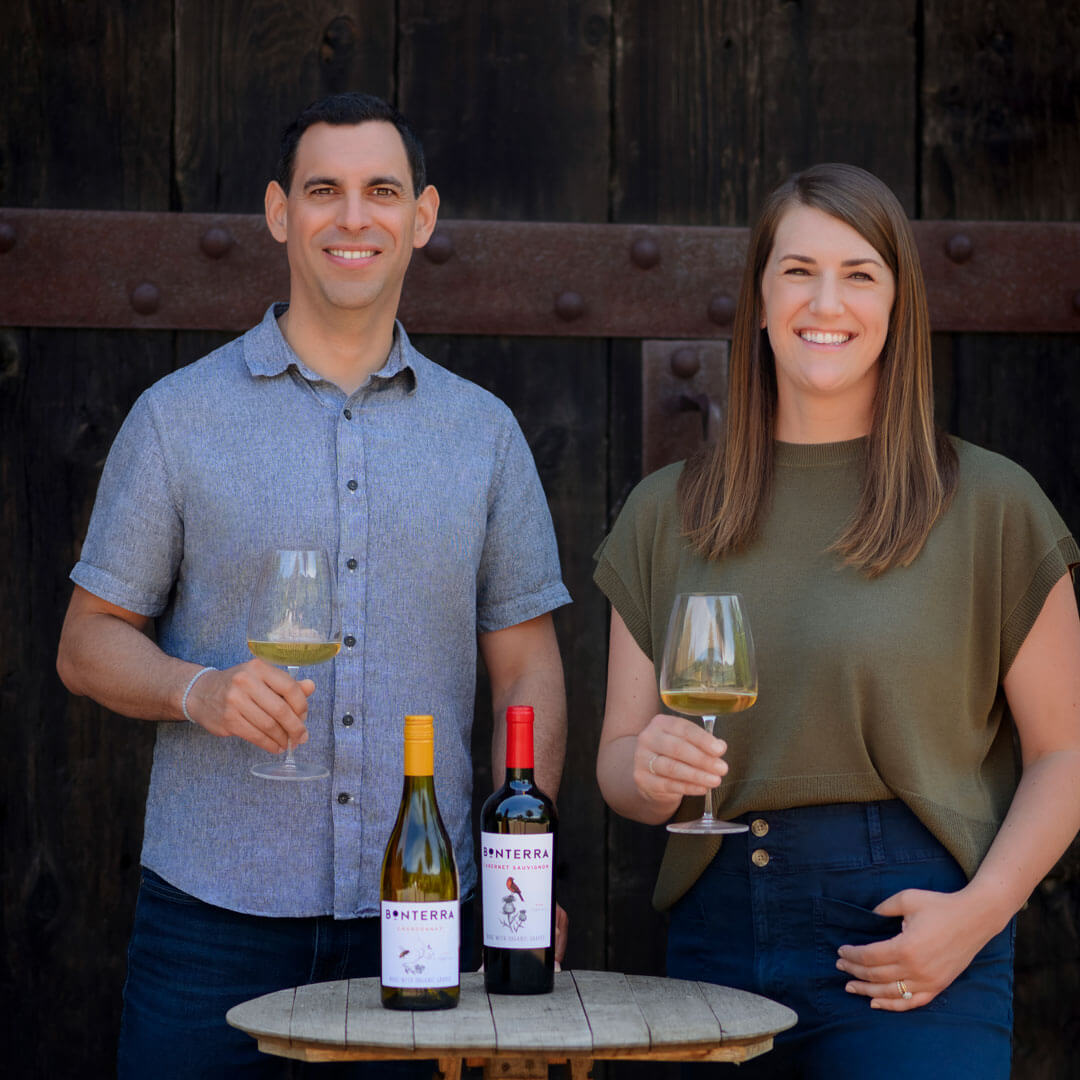Do you have a wine decanter? This iconic piece of glassware is a key piece in any wine lover’s collection, but a lot of people aren’t confident about when and why to use it. In this post, we’ll answer both those essential questions – and give you a step-by-step guide on how to decant wine properly.
TL;DR: Decanting primarily helps aerate wine so its flavors can unfold more quickly in your wine glass, but it also eliminates any sediment. It’s really best for young, tannic reds; decanting older wines can ruin them.
Purpose and Benefits of Decanting
Why do you decant wine? Besides the obvious wow factor, the decanting process does two things that can increase your enjoyment of the wine.
(1) Decanting helps wine breathe.
When you pour wine into a decanter, a much larger percentage of it becomes exposed to oxygen. And when a wine is exposed to oxygen, its volatile compounds begin to transform and evolve. A wine’s aromas and flavors will often gain complexity and become more noticeable after some time exposed to air. Tannins also start to evolve as the oxygen interacts with those molecules, softening their grip on your mouth’s soft tissue.
You might have noticed this already if you leave your red wine open on the table after you pour your first glass. The glass you pour an hour after the first one often tastes very different – and, usually, better. Decanting speeds that process up by exposing your wine to more air.
So essentially, decanting lets you mimic and accelerate the aging process – and drink younger wines in a more evolved state.
(2) Decanting leaves any solids in the bottle.
Many wines naturally will throw off some sediment as they age – leaving a teaspoon or so of sandy or muddy solids at the bottom of the bottle. Some wines may not have been filtered or cold stabilized before they were bottled, so might have bits of spent yeast (unfiltered) or clear tartrate crystals (not cold stabilized) even while they’re young. None of these solids will hurt you, but they also won’t improve your wine drinking experience if they wind up in your glass.
When you pour a wine into a decanter, and stop pouring before you get to the bottom, any sediment or grit stays in the bottle. So your decanted wine is perfectly clear, and ready to be savored.
A filter is an easier way to deal with sediment, though. So Reason #1 – letting the wine breathe – is definitely the most important reason to decant.
Which Wines Benefit Most from Decanting?
The best wines to decant are young (1-3 years old), tannic red wines like Cabernet Sauvignon, Cabernet Franc, Petit Verdot, Tempranillo, and Tannat. You can even try out a young red blend (learn more about what is a red blend wine on our blog). These kinds of wines are at the beginning of their evolution, and will usually benefit from the accelerated aging decanting offers. Letting them sit for an hour or two in a decanter gives them a chance to bloom into a more nuanced, mature version of themselves. The younger and the more tannic a red wine is, the more decanting is likely to make a positive difference to your enjoyment.
You can also decant younger wines that don’t have a lot of tannin, like Pinot Noir or complex white wines like Chardonnay, to help experience them at their best. Even 15 minutes in a decanter can help bring out these wines’ aromatic charms more clearly.
A lot of people think that older wines need to be decanted before serving, but this is usually not a good idea. Older wines are, by definition, old – they’ve already had years of evolution in the bottle with the oxygen that seeps in through the cork. They’re already pretty advanced in their evolution, and they may not last much longer once they’re exposed to oxygen. This is why with mature red wines (8+ years), it is almost always better not to decant. Just pour carefully from the bottle (and/or use a filter) to eliminate the risk of sediment. You don’t want to rush your precious aged wine past its peak in a decanter before you’ve even gotten to taste it!
Step-by-Step Guide to Decanting
Decanting is a pretty easy process, but there are a few key details of the decanting process to remember.
1. Decanter Shape.
Choose a decanter that gives the wine a lot of surface area exposed to the air. The point of decanting is to give the wine more than the (approximately) 7 square inches it has in a wine bottle, so pick one that’s got a nice wide bulge where the wine can interact with oxygen on a large scale.
It also helps if you choose a decanter that’s easy to hold and pour from, with minimal drips. You don’t want to waste any of your meticulously decanted wine!
2. Keep the Bottle Upright.
While wine should be stored laying on its side (to better preserve it), place it upright for a day or two before decanting, so any sediment or precipitate falls to the bottom. Keep the bottle upright and as motionless as possible while you open it so the solids don’t swirl up again.
3. Use a Light.
In bygone times, wine stewards would decant wines in front of a lit candle so they could see where the sediment was, and adjust their pouring accordingly. These days, it’s more efficient to use a small light (a smartphone flashlight works just fine). Set it up behind your bottle so you can easily see any particles trying to make their escape from the bottle while you pour.
4. Go Slow!
The point of decanting is controlled maturation, so pour the wine into the decanter slowly and steadily. (You can always swirl it around in the decanter later, if you decide you want to speed up the aeration even more.) If/when you see sediment moving into the neck of the bottle towards the end of the bottle, slow down the pouring to stop it from escaping. You probably will need to leave a little bit of wine behind with the sediment, but that’s ok. It’s better to have grit-free wine.
5. Wait.
Let your wine sit in the decanter a while before you serve it. For white wines that need to stay chilled, don’t wait longer than 15 minutes. For very full-bodied young red wines, though, give it a good hour before pouring a glass.
The Takeaway
A decanter is a lot like a time machine. Used correctly, you can peek into the future and experience your wines at their peak complexity and flavor! The process can drastically improve your wine drinking experience. Used incorrectly, however, you can rush your wine into premature old age.
Try decanting your favorite young Bonterra wines for different periods of time, to find out where their sweet spot is for you. Our Estate Collection Red Wine Bundle and our Chardonnay Collection Bundle include several bottles of each wine so you can do side-by-side tastings to experience the difference a decanter makes.
Discover more Bonterra wines and even buy wine online through our organic winery. If you’re interested in trying exclusive releases, consider joining our wine club. Now, pour yourself a glass and enjoy your nice, properly decanted wine. Cheers!




